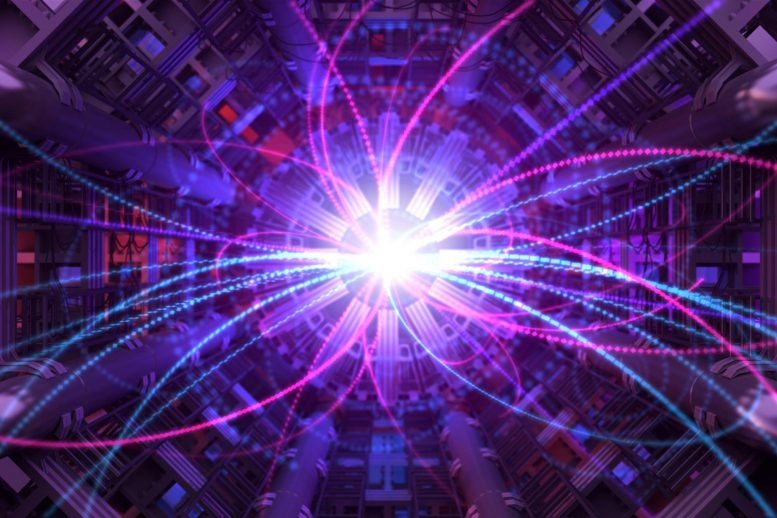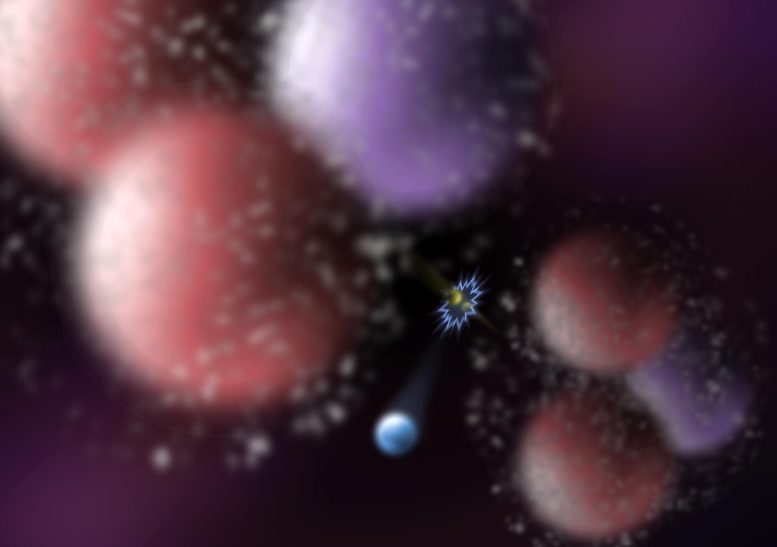By

Recent theoretical advances have provided insights into the properties of the Higgs boson, focusing on its cross section during gluon-gluon collisions. This research highlights the relevance of higher-order corrections and confirms the predictions of the Standard Model. Further research should clarify the potential for new physics.
New research confirms the Standard Model’s predictions about the Higgs boson while suggesting that future data could reveal previously unknown aspects of particle physics.
The Higgs boson was discovered in the detectors of the Large Hadron Collider about a dozen years ago. It has proven to be such a difficult particle to produce and observe that, despite the passage of time, its properties are still not known with satisfactory precision.
” data-gt-translate-attributes=”({“attribute”:”data-cmtooltip”, “format”:”html”})” tabindex=”0″ role=”link”>precision. We now know a little more about its origin, thanks to the recently published achievement of an international group of theoretical physicists with the participation of the Institute of Nuclear Physics of the Polish Academy of Sciences.
Discovery of the Higgs boson
The scientific world is unanimous in affirming that the greatest discovery made thanks to the Large Hadron Collider (LHC) is the famous Higgs boson. For twelve years, physicists have been trying to learn as precisely as possible about the properties of this very important elementary particle. The task is extremely difficult because of the experimental challenges and the many computational obstacles.
Fortunately, significant progress has just been made in theoretical research, thanks to a group of physicists from the Institute of Nuclear Physics of the Polish Academy of Sciences (IFJ PAN) in Krakow, RWTH Aachen University (RWTH) in Aachen and the Max-Planck-Institut für Physik (MPI) in Garching near Munich.
The “God particle”
Often called the “God particle,” the Higgs boson gets its nickname from the title of Leon Lederman’s book. The original, more irreverent title, “The Cursed Particle,” was intended to reflect frustration at how difficult it was to detect. The publisher opted for a less controversial name that reflects the Higgs boson’s importance in particle physics: it is central to the theory that explains how other particles acquire mass, a fundamental aspect of the structure of our universe.

The Higgs boson (blue) could be created by the interaction of gluons (yellow) in proton collisions. Protons consist of two up quarks (red) and one down quark (purple), bound by gluons so tightly that in the sea of virtual particles (grey) more massive quarks and antiquarks, e.g. beautiful quarks, can appear, the presence of which also affects the birth process of Higgs bosons. Credit: IFJ PAN
The role of the standard model
The Standard Model is a complex theoretical framework constructed in the 1970s to coherently describe the currently known elementary particles of matter (quarks, as well as electrons, muons, tau and the associated trinity of neutrinos) and the electromagnetic (photons) and nuclear forces (gluons in the case of strong interactions, W and Z bosons in the case of weak interactions).
The icing on the cake of the creation of the Standard Model was the discovery, thanks to the LHC, of the Higgs boson, a particle that plays a key role in the mechanism responsible for assigning masses to other elementary particles. The discovery of the Higgs boson was announced in mid-2012. Since then, scientists have been trying to obtain as much information as possible about this fundamentally important particle.
Improved analysis of Higgs boson collisions
“For a physicist, one of the most important parameters associated with any elementary or nuclear particle is the cross section of a specific collision. Indeed, it tells us how often we can expect the particle to appear in collisions of a certain type. We focused on the theoretical determination of the cross section of the Higgs boson in gluon-gluon collisions. They are responsible for the production of about 90% of the Higgs boson, traces of whose presence have been recorded in the detectors of the LHC accelerator,” explains Dr. René Poncelet (IFJ PAN).
Prof. Michal Czakon (RWTH), co-author of the article in the prestigious physics journal
Source link